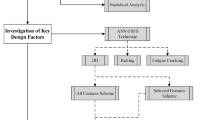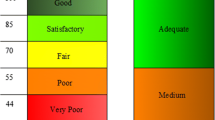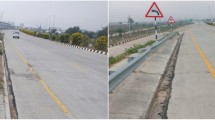Abstract
In recent years, the application of titanium dioxide (TiO2) as a photocatalyst in asphalt pavement has received considerable attention for purifying ambient air from traffic-emitted pollutants via photocatalytic processes. In order to control the increasing deterioration of ambient air quality, urgent and proper risk assessment tools are deemed necessary. However, in practice, monitoring all process parameters for various operating conditions is difficult due to the complex and non-linear nature of air pollution-based problems. Therefore, the development of models to predict air pollutant concentrations is very useful because it can provide early warnings to the population and also reduce the number of measuring sites. This study used artificial neural network (ANN) and neuro-fuzzy (NF) models to predict NOx concentration in the air as a function of traffic count (Tr) and climatic conditions including humidity (H), temperature (T), solar radiation (S), and wind speed (W) before and after the application of TiO2 on the pavement surface. These models are useful for modeling because of their ability to be trained using historical data and because of their capability for modeling highly non-linear relationships. To build these models, data were collected from a field study where an aqueous nano TiO2 solution was sprayed on a 0.2-mile of asphalt pavement in Baton Rouge, LA. Results of this study showed that the NF model provided a better fitting to NOx measurements than the ANN model in the training, validation, and test steps. Results of a parametric study indicated that traffic level, relative humidity, and solar radiation had the most influence on photocatalytic efficiency.







Similar content being viewed by others
References
Abdul-Wahab SA, Al Alawi SM (2002) Assessment and prediction of tropospheric ozone concentration levels using artificial neural networks. Environ Model Softw 17(3):219–228
Agirre-Basurko E, Ibarra-Berastegi G, Madariaga I (2006) Regression and multilayer perceptron-based models to forecast hourly O3 and NO2 levels in the Bilbao area. Environ Model Softw 21(4):430–446
Akkoyunlu A, Yetilmezsoy K, Erturk F, Oztemel E (2010) A neural network-based approach for the prediction of urban SO2 concentrations in the Istanbul metropolitan area. Int J Environ Pollut 40(4):301–321
Aqil M, Kita I, Yano A, Nishiyama S (2007) Analysis and prediction of flow from local source in a river basin using a neuro-fuzzy modelling tool. J Environ Manag 85(1):215–223
ASCE Task Committee on Application of Artificial Neural Networks in Hydrology (2000) Artificial neural network in hydrology, part I and II. J Hydraul Eng 5(2):115–137
Asghari MA, Nadiri AA, Fijani E (2010) Spatial prediction of fluorideconcentration using artificial neural networks and geostatic models. J Water Soil Sci 19(1):129–145
Barai SV, Dikshit AK, Sharma S (2007) Neural network models for air quality prediction: a comparative study. Soft Comput Ind Appl 39:290–305
Bardossy A, Disse M (1993) Fuzzy rule-based models for infiltration. Water Resour Res 29(2):373–382
Beeldens A (2006) An environmental friendly solution for air purification and self-cleaning effect: the application of TiO2 as photocatalyst in concrete. In: Proceedings of Transport Research Arena, Göteborg, Belgian Road Research Centre, Sweden
Beeldens A (2008) Air purification by pavement blocks: final results of the research at the BRRC. In: Transport Research Arena Europe, Ljubljana
Bengtsson N, Castellote M (2010) Photocatalytic activity for NO degradation by construction materials: parametric study and multivariable correlations. J Adv Oxid Technol 13(3):341–349
Berdahl P, Akbari H (2008) Evaluation of titanium dioxide as a photocatalyst for removing air pollutants. California Energy Commission. PIER Energy-Related Environmental Research Program
Brunelli U, Piazza V, Pignato L, Sorbello F, Vitabile S (2007) Two-days ahead prediction of daily maximum concentrations of SO2, O3, PM10, NO2, CO in the urban area of Palermo, Italy. Atmos Environ 41:2967–2995
Cai M, Yin Y, Xie M (2009) Prediction of hourly air pollutant concentrations near urban arterials using artificial neural network approach. Transp Res D 14:32–41
Carnevale C, Finzi G, Pisoni E, Volta M (2009) Neuro-fuzzy and neural network systems for air quality control. Atmos Environ 43:4811–4821
Chen M, Chu J-W (2011) NOx photocatalytic degradation on active concrete road surface—from experiment to real-scale application. J Clean Prod 19(11):1266–1272
Chen MS, Wang SW (1999) Fuzzy clustering analysis for optimizing fuzzy membership functions. Fuzzy Sets Syst 103(2):239–254
Dylla H, Hassan MM (2012a) Characterization of nanoparticle release during construction of photocatalytic pavements using engineered nanoparticles. J Nanoparticle Res 14:4
Dylla H, Hassan MM, Osborn D (2012b) Field evaluation of photocatalytic concrete pavements’ ability to remove nitrogen oxides. J Transp Res Rec 2290:154–160
Dylla H, Asadi S, Hassan M (2013) Evaluating photocatalytic asphalt pavement effectiveness in real world environments through developing models: a statistical and kinetic study. In: 88th American Asphalt Pavement Technology Annual Meeting, Denver, CO
Fujishima A, Rao TN, Tryk DA (2000) Titanium dioxide photocatalysis. J Photochem Photobiol C: Photochem Rev 1(1):1–21
Gautam AK, Chelani AB, Jain VK, Devotta S (2008) A new scheme to predict chaotic time series of air pollutant concentrations using artificial neural network and nearest neighbor searching. Atmos Environ 42:4409–4417
Hassan M, Mohammad L, Asadi S, Dylla H, Cooper S (2012) Sustainable photocatalytic asphalt pavements for mitigation of nitrogen oxide and sulfur dioxide vehicle emissions. J Mater Civ Eng 25(3):365–371
He F, Ma C (2010) Modeling greenhouse air humidity by means of artificial neural network and principal component analysis. Comput Electron Agric 71:S19–S23. doi:10.1016/j.compag.2009.07.011
Hooyberghs J, Mensink C, Dumont G, Fierens F, Brasseur O (2005) A neural network forecast for daily average PM10 concentrations in Belgium. Atmos Environ 39:3279–3289
Karppinen A, Kukkonen J, Elolähde T, Konttinen M, Koskentalo T, Rantakrans E (2000) A modelling system for predicting urban air pollution: model description and applications in the Helsinki metropolitan area. Atmos Environ 34:3723–3733
Li L, Qian C (2009) A lab study of photo-catalytic oxidation and removal of nitrogen oxides in vehicular emissions and its fieldwork on Nanjin no.3 bridge of Yangtze River. J Pavement Resour Technol 2(5):218–222
Lin CH, Wu YL (2003) Semi-statistical model for evaluating the effects of source emissions and meteorological effects on daily average NOx concentrations in south Taiwan. Atmos Environ 37:2051–2059
Lin J, Yu D (2008) Traffic-related air quality assessment for open road tolling highway facility. J Environ Manag 88:962–969
Maggos T, Bartiz J, Liakou M, Gobin C (2007) Photocatalytic degradation of NOx gases using TiO2-containing paint: A real scale study. J Hazard Mater 146:668–673
Maggos T, Plassais A, Bartzis JG, Vasilakos C, Moussiopoulos A, Bonafous L (2008) Photocatalytic degradation of NOx in a pilot street canyon configuration using TiO2-mortar panels. Environ Monit Assess 136:35–44
Maier HR, Dandy GC (2000) Neural network for the prediction and forecasting water resources variables: a review of modeling issues and applications. Environ Model Softw 15(1):101–124
Maier HR, Jain A, Dandy GC, Sudheer KP (2010) Methods used for the development of neural networks for the prediction of water resource variables in river systems: current status and future directions. Environ Model Softw 25(8):891–909
Moussiopoulos N, Barmpas Ph, Ossanlis I, Bartiz J (2008) Comparison of numerical and experimental results for the evaluation of the depollution effectiveness of photocatalytic coverings in street canyons. 13 (3):357–368
Nadiri AA, Chitsazan N, Tsai F, Moghaddam A (2013a) Bayesian artificial intelligence model averaging for hydraulic conductivity estimation. J Hydrol Eng 19(3):520–532. doi:10.1061/(ASCE)HE.1943-5584.0000824
Nadiri AA, Fijani E, Tsai F, Moghaddam AA (2013b) Supervised committee machine with artificial intelligence for prediction of fluoride concentration. J Hydroinformatics 15(4):1474–1490
Nayak PC, Sudheer KP, Rangan DM, Ramasastri KS (2004) A neuro-fuzzy computing technique for modeling hydrological time series. J Hydrol 291(1–2):52–66
Nourani V, Asgharimogaddam A, Nadiri AA (2008) An ANN-based model for spatiotemporal groundwater level forecasting. Hydrol Process 22:5054–5066
Palani S, Liong SY, Tkalich P (2008) An ANN application for water quality forecasting. Mar Pollut Bull 56(9):1586–1597
Paschalidou AK, Karakitsios S, Kleanthous S, Kassomenos PA (2011) Forecasting hourly PM10 concentration in Cyprus through artificial neural networks and multiple regression models: implications to local environmental management. Environ Sci Pollut Res 18(2):316–327
Patricio P, Jorge R (2006) An integrated neural network model for PM10 forecasting. Atmos Environ 430:2845–2851
Pires JCM, Gonçalves B, Azevedo FG, Carneiro AP, Rego N, Assembleia AJB, Lima JFB, Silva PA, Alves C, Martins FG (2012) Optimization of artificial neural network models through genetic algorithms for surface ozone concentration forecasting. Environ Sci Pollut Res 19:3228–3234
Pulido-Calvo I, Gutiérrez-Estrada JC (2009) Improved irrigation water demand forecasting using a soft-computing hybrid model. Biosyst Eng 102(2):202–218
Salazar-Ruiz E, Ordieres JB, Vergara EP, Capuz-Rizo SF (2008) Development and comparative analysis of tropospheric ozone prediction models using linear and artificial intelligence-based models in Mexicali, Baja California (Mexico) and Calexico, California (US). Environ Model Softw 23(8):1056–1069. doi:10.1016/j.envsoft.2007.11.009
Sharma N, Chaudhry KK, Chalapati Rao CV (2004) Vehicular pollution prediction modeling: a review of highway dispersion models. Transp Rev 24(4):409–435
Sleiman M, Conchon P, Ferronato C, Chovelon JM (2009) Photocatalytic oxidation of toluene at indoor air levels (ppbv): towards a better assessment of conversion, reaction intermediates and mineralization. Appl Catal B Environ 86(3–4):159–165
Sousa S, Martins F, Alvimferraz M, Pereira M (2007) Multiple linear regression and artificial neural networks based on principal components to predict ozone concentrations. Environ Model Softw 22(1):97–103. doi:10.1016/j.envsoft.2005.12.002
Sugeno M, Yasukawa T (1993) A fuzzy logic-based approach to qualitative modelling. IEEE Trans Fuzzy Syst 1(1):7–31
Takagi T, Sugeno M (1985) Fuzzy identification of systems and its application to modeling and control. IEEE Trans Syst Man Cybern 15(1):116–132
Venturini L, Bacchi M (2009) Research, design, and development of a photocatalytic asphalt pavement. Proceedings of 2nd International Conference on Environmentally Friendly Roads. ENVIROAD, Warsaw, Poland
Yetilmezsoy K, Abdul-Wahab S (2012) A prognostic approach based on fuzzy-logic methodology to forecast PM10 levels in Khaldiya residential area, Kuwait. Aerosol Air Qual Res 12:1217–1236
Yildirim Y, Bayramoglu M (2006) Adaptive neuro-fuzzy based modelling for prediction of air pollution daily levels in city of Zonguldak. Chemosphere 63:1575–1582
Zhao J, Yang X (2003) Photocatalytic oxidation of indoor air purification: a literature review. Build Environ 38:645–654
Zounemat-Kermani M, Teshnehlab M (2008) Using adaptive neuro-fuzzy inference system for hydrological time series prediction. Appl Soft Comput 8(2):928–936
Acknowledgments
This work was funded through a grant from the Gulf Coast Research Center for Evacuation and Transportation Resiliency. The authors would like to acknowledge PURETI for donating the materials needed for the construction of the field study and the support of Louisiana Transportation Research Center (LTRC) for granting access to their laboratory.
Author information
Authors and Affiliations
Corresponding author
Additional information
Responsible editor: Michael Matthies
Rights and permissions
About this article
Cite this article
Asadi, S., Hassan, M., Nadiri, A. et al. Artificial intelligence modeling to evaluate field performance of photocatalytic asphalt pavement for ambient air purification. Environ Sci Pollut Res 21, 8847–8857 (2014). https://doi.org/10.1007/s11356-014-2821-z
Received:
Accepted:
Published:
Issue Date:
DOI: https://doi.org/10.1007/s11356-014-2821-z




